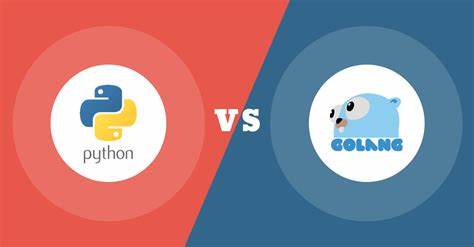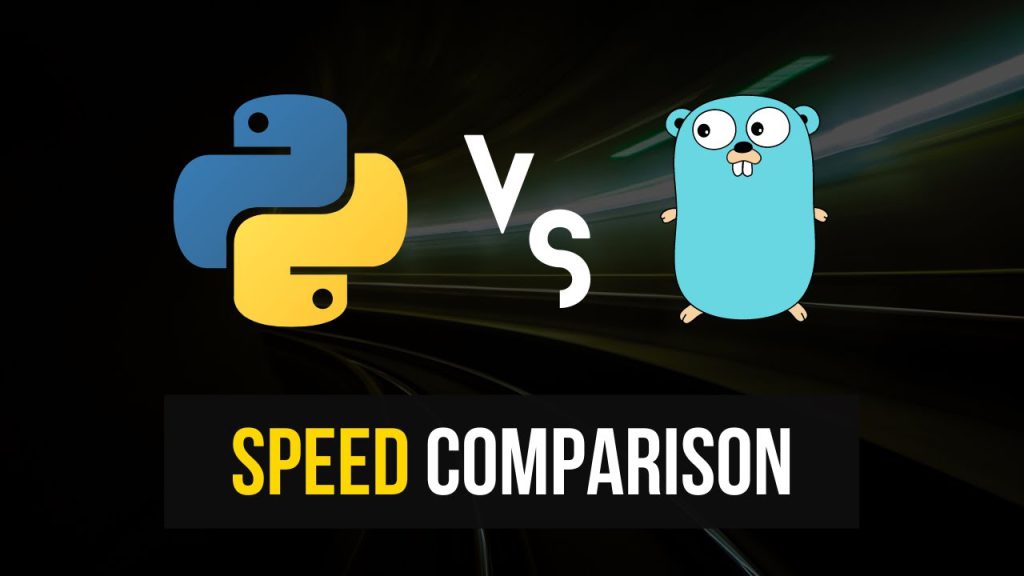
Cyber demands robust and efficient programming languages to develop tools and applications that can withstand the relentless challenges posed by cyber threats – and this is the defacto post on python or go in cybersecurity.
I actually wrote a post specifically on python vs GO in subdomain enumeration – here and here. ! Subdomain enumeration is one of my favorite reconaissance methods.
Python and Go (or Golang) have emerged as popular choices among security professionals, each offering distinct advantages and use cases. This comprehensive article aims to explore and compare Python and Go in the realm of cybersecurity, covering aspects such as performance, ease of use, security features, community support, and practical applications.
Python in Cybersecurity
Python has entrenched itself as a powerhouse in the programming world, renowned for its readability, versatility, and extensive libraries. In the cybersecurity domain, Python has become the language of choice in the battle of python or go in cybersecurity, for various reasons.
- Ease of Learning and Readability:
- Python’s syntax is clean, concise, and easy to read, making it an ideal language for both beginners and experienced developers. In cybersecurity, where collaboration and rapid development are crucial, Python’s readability significantly accelerates the coding process.
- Extensive Libraries:
- Python boasts an extensive collection of libraries and frameworks that cater specifically to cybersecurity needs. Libraries like Scapy for packet manipulation, PyCrypto for cryptography, and Requests for HTTP interactions empower security professionals with ready-to-use tools.
- Community Support:
- Python’s vibrant and active community contributes to the development of numerous security-focused libraries and tools. This vast ecosystem provides security professionals with an abundance of resources, tutorials, and community-driven solutions.
- Scripting Capabilities:
- Python’s scripting capabilities make it particularly suitable for automating tasks and orchestrating security workflows. Whether it’s automating penetration testing, network scanning, or log analysis, Python excels in scripting applications that enhance efficiency and responsiveness.
- Web Application Security:
- Frameworks like Django and Flask make Python an excellent choice for securing web applications. Python’s integration with OWASP’s ZAP (Zed Attack Proxy) and other security testing tools further solidifies its position in web application security.
Go in Cybersecurity
Go, developed by Google, has gained popularity for its simplicity, concurrency support, and efficiency. While not as mature as Python in terms of libraries, Go offers unique features that make it a compelling choice for certain cybersecurity applications.
- Concurrency and Efficiency:
- Go is renowned for its concurrency model, allowing it to efficiently handle multiple tasks concurrently. In cybersecurity, where speed and resource efficiency are paramount, Go’s performance shines in scenarios such as building concurrent network scanners or handling large-scale data processing.
- Static Binary Compilation:
- Go’s ability to compile code into a single, statically linked binary simplifies deployment. This feature is advantageous in security tools where portability and ease of distribution are crucial, such as in creating lightweight penetration testing tools.
- Built-in Concurrency Support:
- Go’s goroutines and channels simplify the implementation of concurrent and parallel processing. This feature is particularly valuable in cybersecurity applications dealing with large datasets, real-time analysis, or network communication.
- Networking Capabilities:
- Go’s native support for networking facilitates the development of scalable and performant network-centric applications. This makes it suitable for creating network security tools or applications requiring low-level network access.
- Security Features:
- Go emphasizes security with features like memory safety, strong typing, and a simplified and consistent syntax. These features contribute to the creation of secure applications, reducing the risk of common vulnerabilities.
Comparative Analysis
Now, let’s delve deeper into specific aspects to provide a more comprehensive comparison between Python and Go in the context of cybersecurity.
1. Performance:

- Python: While Python is known for its readability and ease of use, its interpreted nature can result in slower performance compared to compiled languages. However, optimizations can be achieved through the use of libraries written in C or C++.
- Go: Go, being a compiled language, offers superior performance in terms of speed and resource utilization. Its concurrency model further enhances performance in scenarios that demand parallelism.
2. Libraries and Frameworks:
- Python: Python has a rich ecosystem of libraries and frameworks for cybersecurity, covering areas such as network analysis, penetration testing, cryptography, and web security. Frameworks like Scapy, PyCrypto, and Django are widely used.
- Go: While Go’s library ecosystem is not as mature as Python’s, it offers libraries like
gopacketfor packet processing andcryptofor cryptography. The Go community is growing, leading to the development of more security-focused libraries.
3. Community Support:
- Python: Python’s extensive community is a significant strength. The wealth of tutorials, forums, and open-source projects related to cybersecurity ensures that developers have access to a vast pool of resources and expertise.
- Go: Go’s community, while not as large as Python’s, is active and steadily growing. The simplicity of the language and the focus on specific use cases, including cybersecurity, attract developers looking for efficient solutions.
4. Ease of Use:
- Python: Python’s readability and simplicity make it an approachable language, particularly for those new to programming. Its syntax, resembling pseudo-code, allows developers to express concepts in fewer lines of code.
- Go: Go follows a minimalist design philosophy, aiming for simplicity and clarity. Its syntax is straightforward, making it easy to learn and maintain. The language enforces good practices, reducing the likelihood of common programming errors.
5. Concurrency and Parallelism:
- Python: Python’s Global Interpreter Lock (GIL) can limit the execution of multiple threads concurrently, affecting its performance in CPU-bound tasks. While multiprocessing can be used for parallelism, it adds complexity.
- Go: Go’s native support for concurrency through goroutines and channels simplifies the development of concurrent applications. This makes Go well-suited for tasks that require parallelism, such as handling multiple network connections simultaneously.
6. Application Deployment:
- Python: Python applications are typically deployed using interpreters, which may require the target system to have the correct Python version installed. Virtual environments or containers can be used to manage dependencies.
- Go: Go compiles code into a standalone binary, simplifying deployment. The resulting binary contains all dependencies, making it easy to distribute without concerns about the target environment.
Practical Applications
Let’s explore specific use cases where Python or Go in cybersecurity may excel.
Python:
- Penetration Testing: Python’s scripting capabilities make it ideal for automating penetration testing tasks. Tools like Metasploit and Scapy leverage Python for scripting functionalities.
- Web Application Security: Frameworks like Django and Flask enable secure web application development, and Python integrates well with security testing tools such as OWASP ZAP.
- Forensics and Incident Response: Python’s extensive libraries, such as Volatility for memory forensics, make it a powerful choice for incident response and digital forensics.
Go:
- Network Security Tools: Go’s concurrency support and efficient networking capabilities make it well-suited for developing network security tools, such as scanners and analyzers.
- Lightweight Security Tools: Go’s static binary compilation simplifies the creation of lightweight security tools. Tools like Nmap and Wireshark have versions or components written in Go.
- Concurrency-Intensive Applications: Go’s goroutines and channels are advantageous in developing applications that require high levels of concurrency, such as real-time analysis or monitoring.
Conclusion
In the realm of cybers, both Python or Go offer unique strengths and cater to different needs. The choice between Python and Go depends on the specific requirements of the task at hand.
- Use Python if:
- Readability and ease of learning are paramount.
- Extensive libraries and frameworks for cybersecurity are essential.
- Rapid development and scripting capabilities are crucial.
- The task involves web application security, penetration testing, or forensics.
- Use Go if:
- Performance and efficiency are critical, especially in concurrency-intensive tasks.
- Deployment simplicity and portability are significant considerations.
- The task involves network security tools, lightweight security tools, or applications demanding high concurrency.
- A statically typed language with a focus on security features is preferred.
Ultimately, the decision between Python and Go in cybersecurity depends on the specific goals, preferences, and constraints of the security professionals and organizations involved. Both languages have proven their effectiveness in different cybersecurity scenarios, showcasing the diversity and adaptability of programming languages in addressing the complex challenges of the cybersecurity landscape. This is my post on python or go in cybersecurity.
Leave a Reply